Part II of II
Last week in Part I on Depression I discussed the importance of laughter for the prevention of depression. In this column, I will discuss one of the most understated benefits of exercise – mental health! Specifically, aerobic exercise (exercise that increases your heart rate for 30 minutes or more) such as walking, biking, running, swimming, hiking, elliptical & stepper machines to name a few, is the secret to “runner’s high.” This exercise euphoria is not limited to runners alone, but all who engage in aerobic exercise are more likely to experience high energy, positive attitude, and mental wellness.
Physical activity, specifically aerobic exercise, is a scientifically proven useful tool for preventing and easing depression symptoms. Studies in the British Journal of Medicine and the Journal of Exercise and Sports Science found that depression scores were significantly reduced in groups that engaged in aerobic running, jogging or walking programs, 30-45 minutes 3-5 days per week for 10-12 weeks, when compared to a control group and a psychotherapy counseling group.
Depression is the most common mental disorder and is twice as common among women as in men. Symptoms include: fatigue, sleeplessness, decreased appetite, decreased sexual interest, weight change, and constipation. Many of these symptoms are likely to bring an individual to their family physician. Unfortunately, depression is on the increase in the United States. According to the National Ambulatory Medical Care Survey, in the early 2000’s, 7 million visits to a primary care physician were for the treatment of depression. 10 years later the number doubled.
According to research reported in The Physical and Sportsmedicine, exercise reduces depression in two ways, psychologically (mentally) and physiological (physically).
Psychological or Mental Benefits of Exercise on Depression:

Read Dr. Mackarey’s Health & Exercise Forum – every Monday
Access all of Dr. Mackarey's articles in the Health and Exercise Forum at: https://mackareyphysicaltherapy.com/forum/
This article is not intended as a substitute for medical treatment. If you have questions related to your medical condition, please contact your family physician. For further inquires related to this topic email: drpmackarey@msn.com
Paul J. Mackarey PT, DHSc, OCS is a Doctor in Health Sciences specializing in orthopaedic and sports physical therapy. Dr. Mackarey is in private practice in downtown Scranton and is an associate professor of clinical medicine at GCSOM.

A healthy immune system may be the difference between recovery from illness and dying. While you may not be able to improve an otherwise healthy immune system, you can take steps to maintain its health and integrity. Exercise is one of the best ways to maintain a healthy immune system.
With the closing of fitness centers, school gyms and exercise classes due to COVID-19, it may be a good time to begin a home exercise program that is quick and easy. For some, home exercises can be done before or after working from home to gain or maintain muscle tone. For others, home exercises may help maintain independence and safety performing daily activities around the house such as; climbing stairs, getting in and out of a shower, putting on shoes and socks, cooking, cleaning, and carrying groceries or laundry.
I have comprised 10 simple exercises including upper and lower body and balance and core. The only equipment you will need is a chair and resistance bands; yellow has the least resistance, black the most, red, green, blue in between. They can be purchased at any sporting goods or department store.
Remember, for most people it is more harmful not to exercise, so contact your physician to discuss whether independent exercise is appropriate for you. If you have special needs, you may need to consult with a physical therapist to get started. Good luck…I hope this helps you survive the COVID-19 quarantine!
These exercises are performed while sitting in a chair with a backrest, slowly. Hold the position for 3 seconds. Perform 5 -10 repetitions. Do these exercises 3-5 times per week. Begin with a yellow light resistance band.
Row the Boat (PHOTO 1)
Saw Wood (Photo 2)
Elbow Extension (Photo 3)
Hip Spread (Photo 4)
Hip Hike (Photo 5)
Leg Kicks (Photo 6)

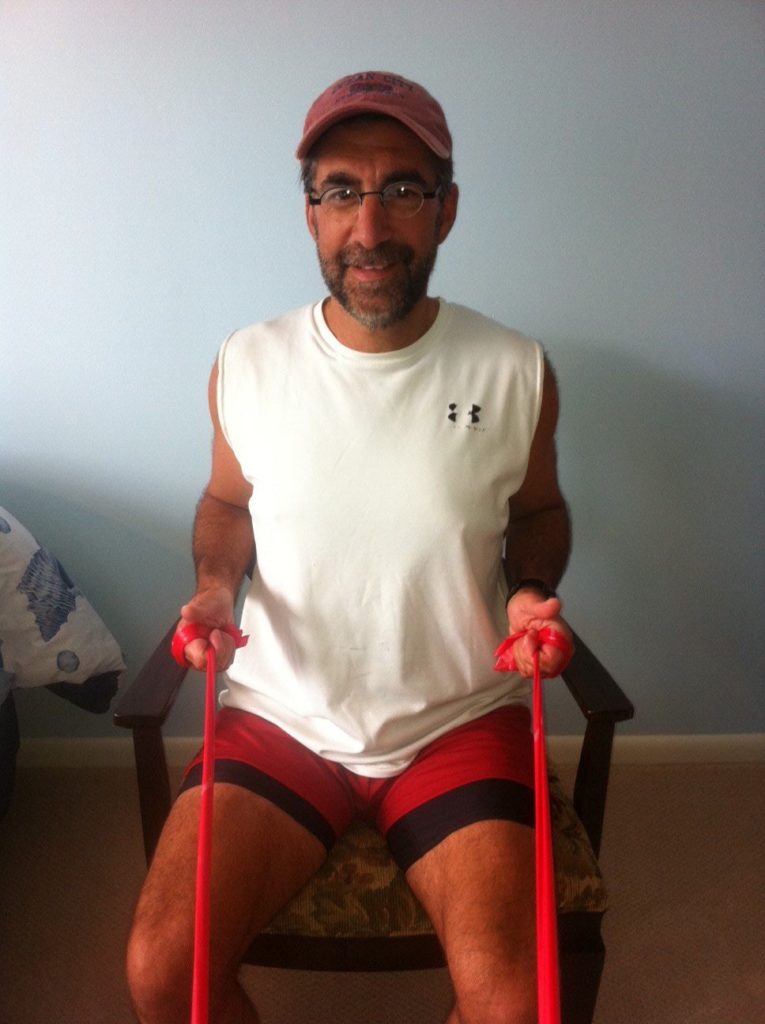
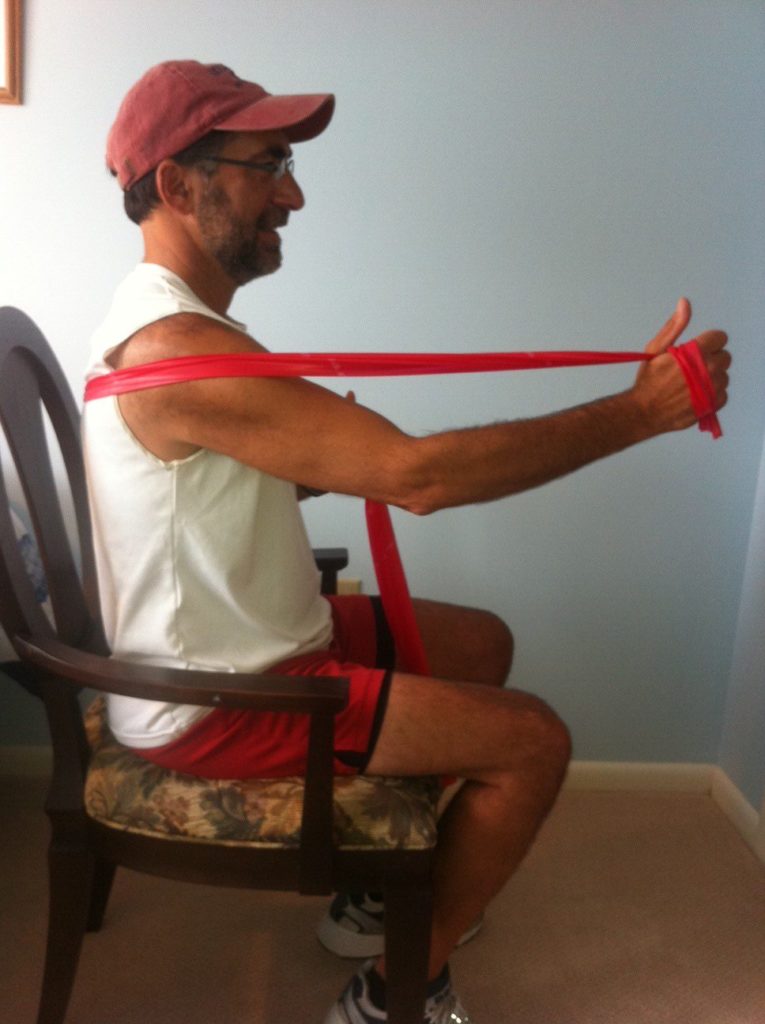
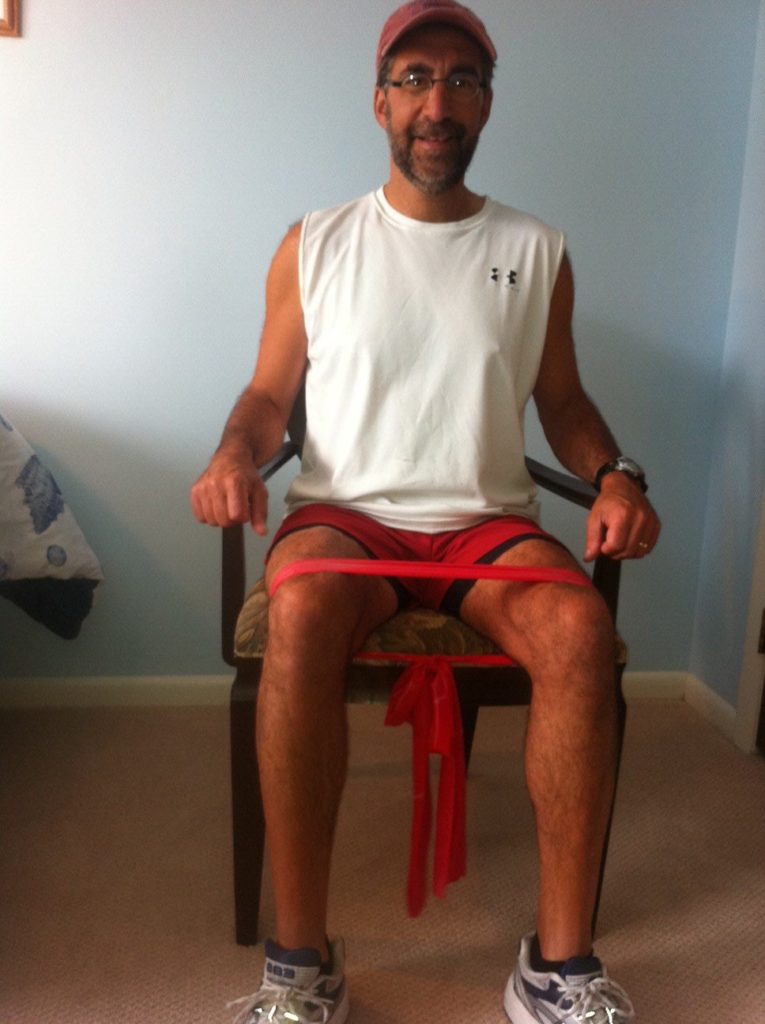
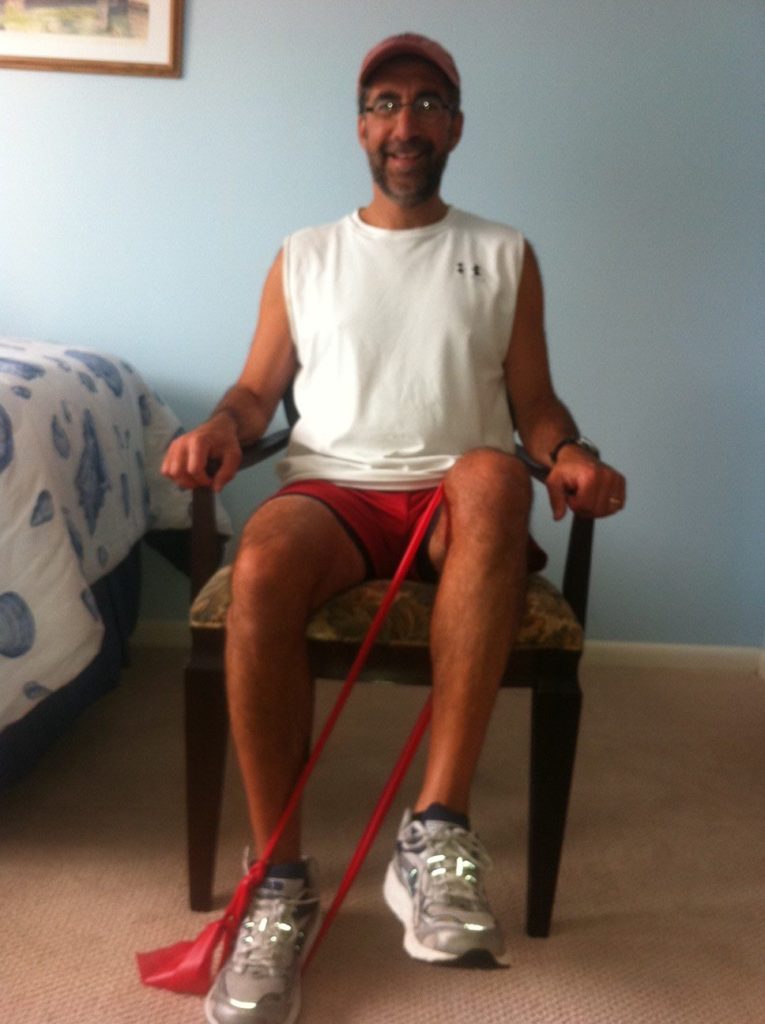
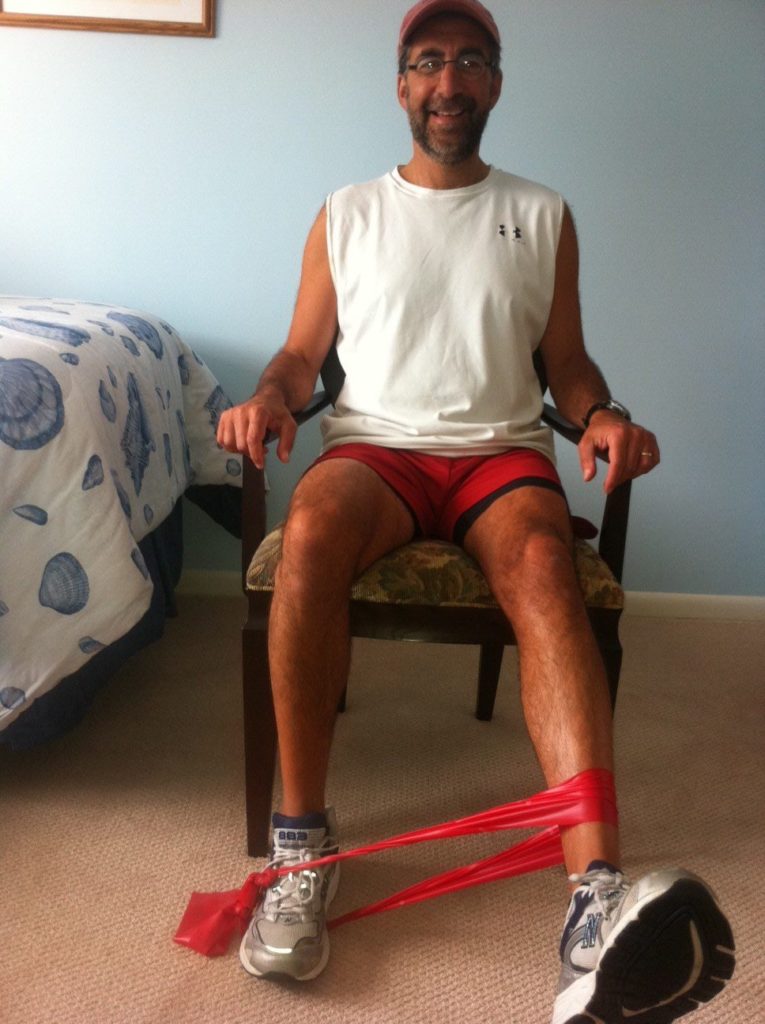
Shoulder Shrug (Photo 7)
Elbow Bend (Photo 8)
Standing Leg Curl (Photo 9)
Standing Walk Aways - Backward (Photo 10)
Standing Walk Aways - Forward
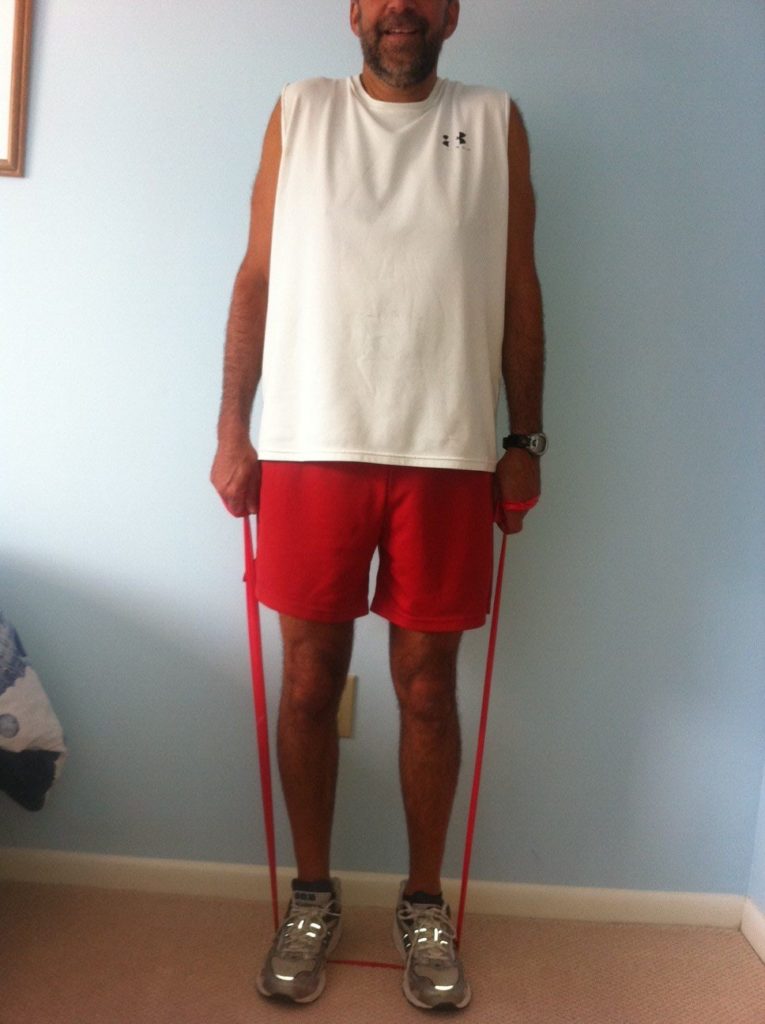
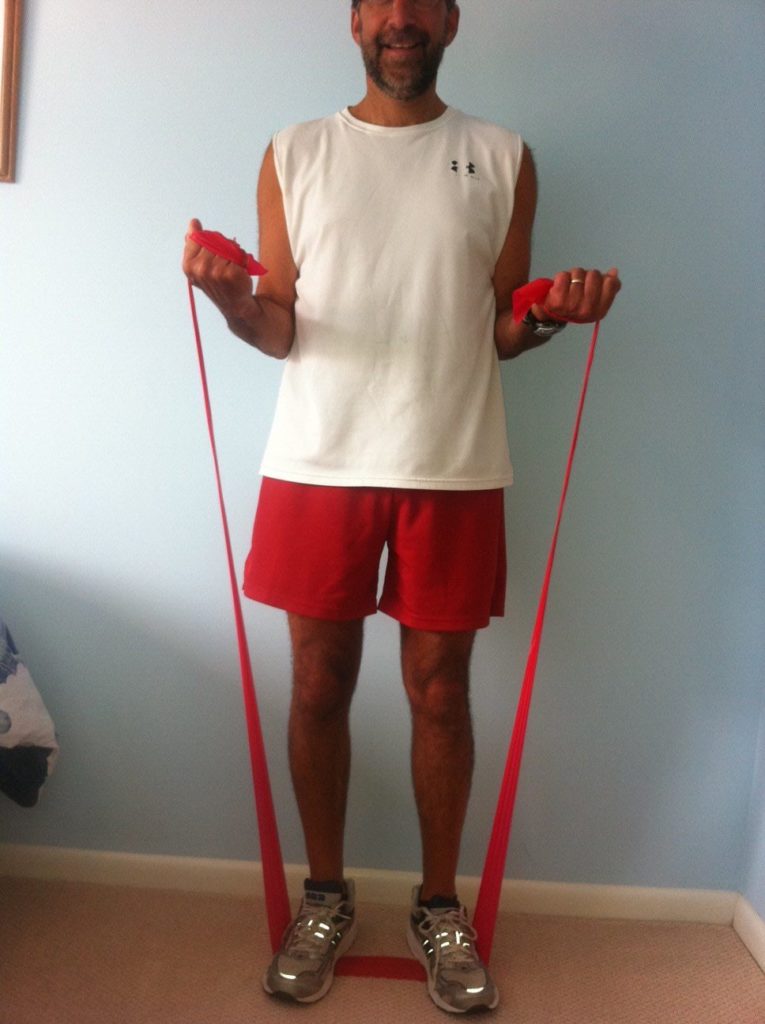
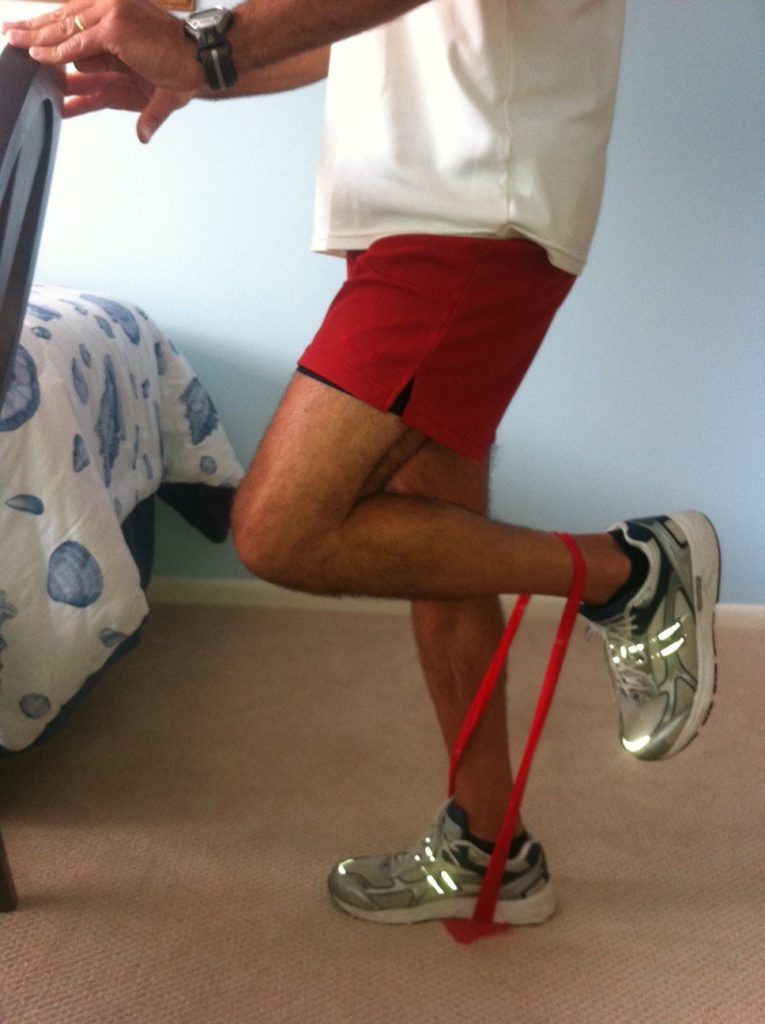
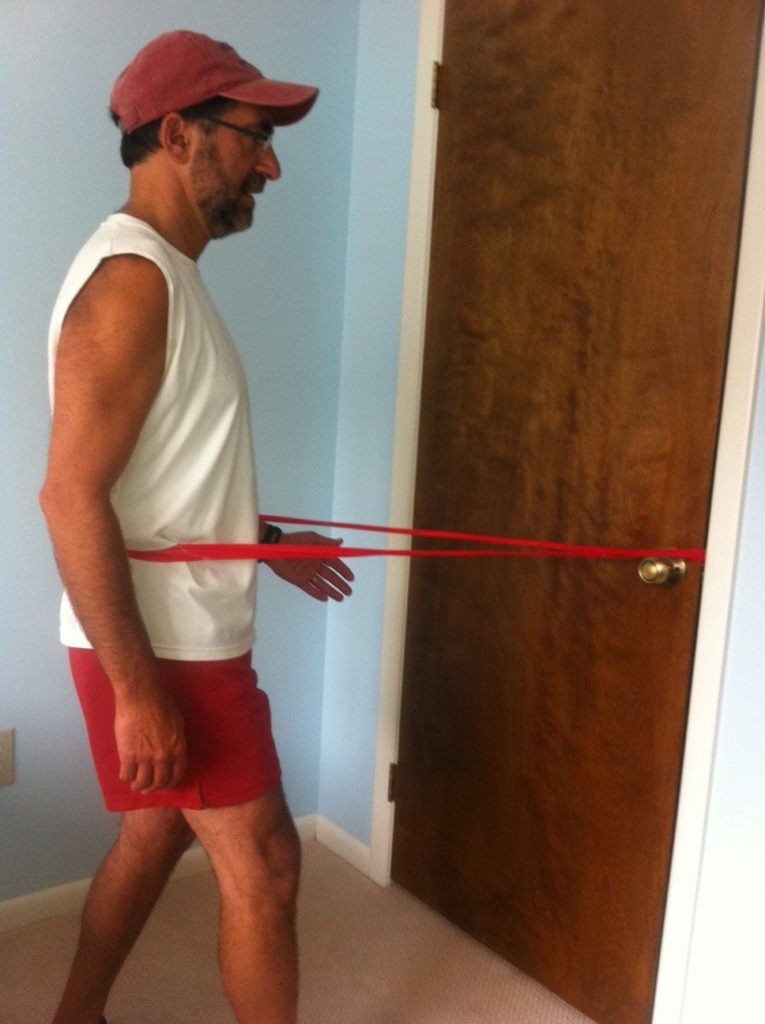
Visit your doctor regularly and listen to your body.
Keep moving, eat healthy foods, exercise regularly, and live long and well!
Read Dr. Mackarey’s "Health & Exercise Forum" every Monday in the Scranton Times-Tribune.
This article is not intended as a substitute for medical treatment. If you have questions related to your medical condition, please contact your family physician. For further inquires related to this topic email: drpmackarey@msn.com
Paul J. Mackarey PT, DHSc, OCS is a Doctor in Health Sciences specializing in orthopaedic and sports physical therapy. Dr. Mackarey is in private practice and is an associate professor of clinical medicine at Geisinger Commonwealth School of Medicine.